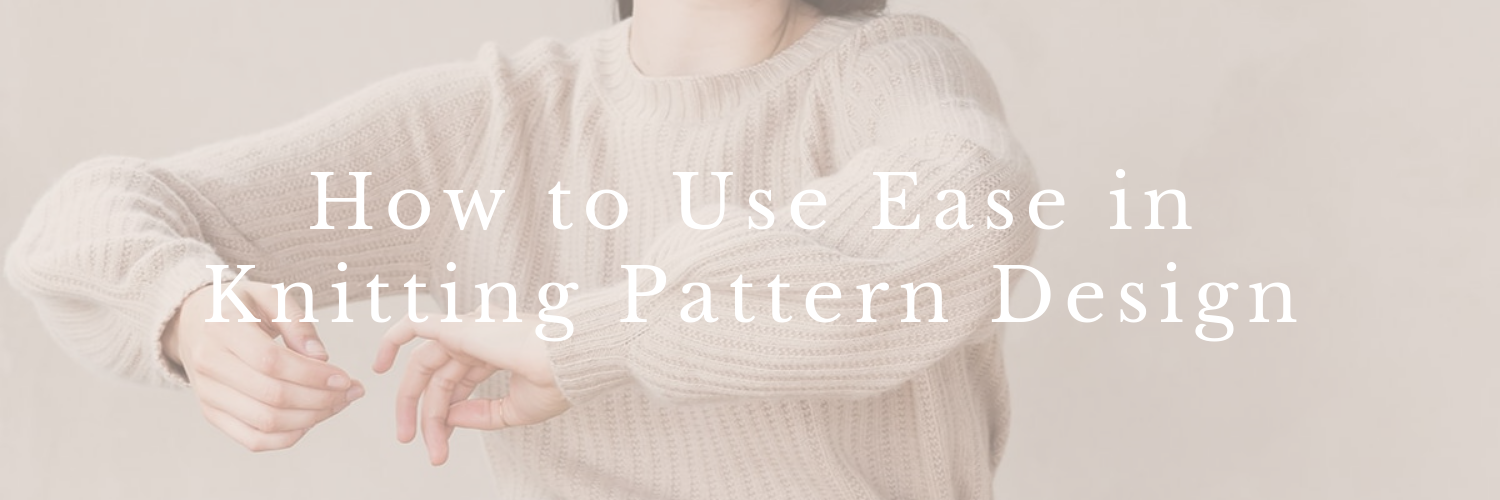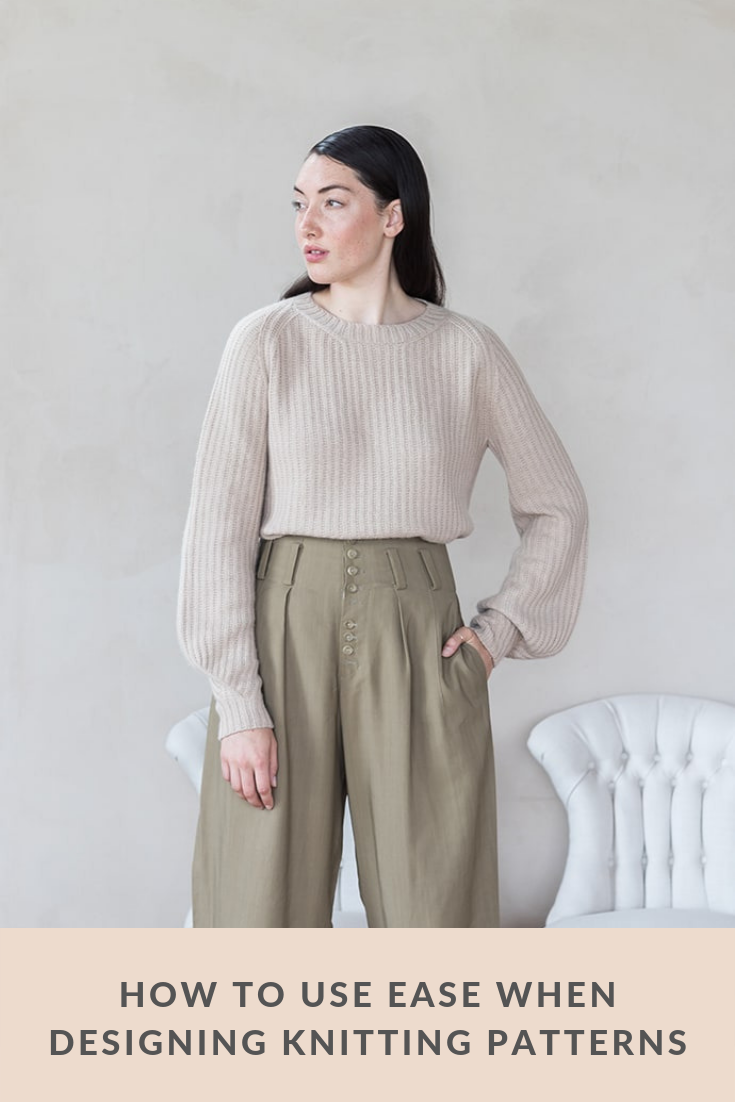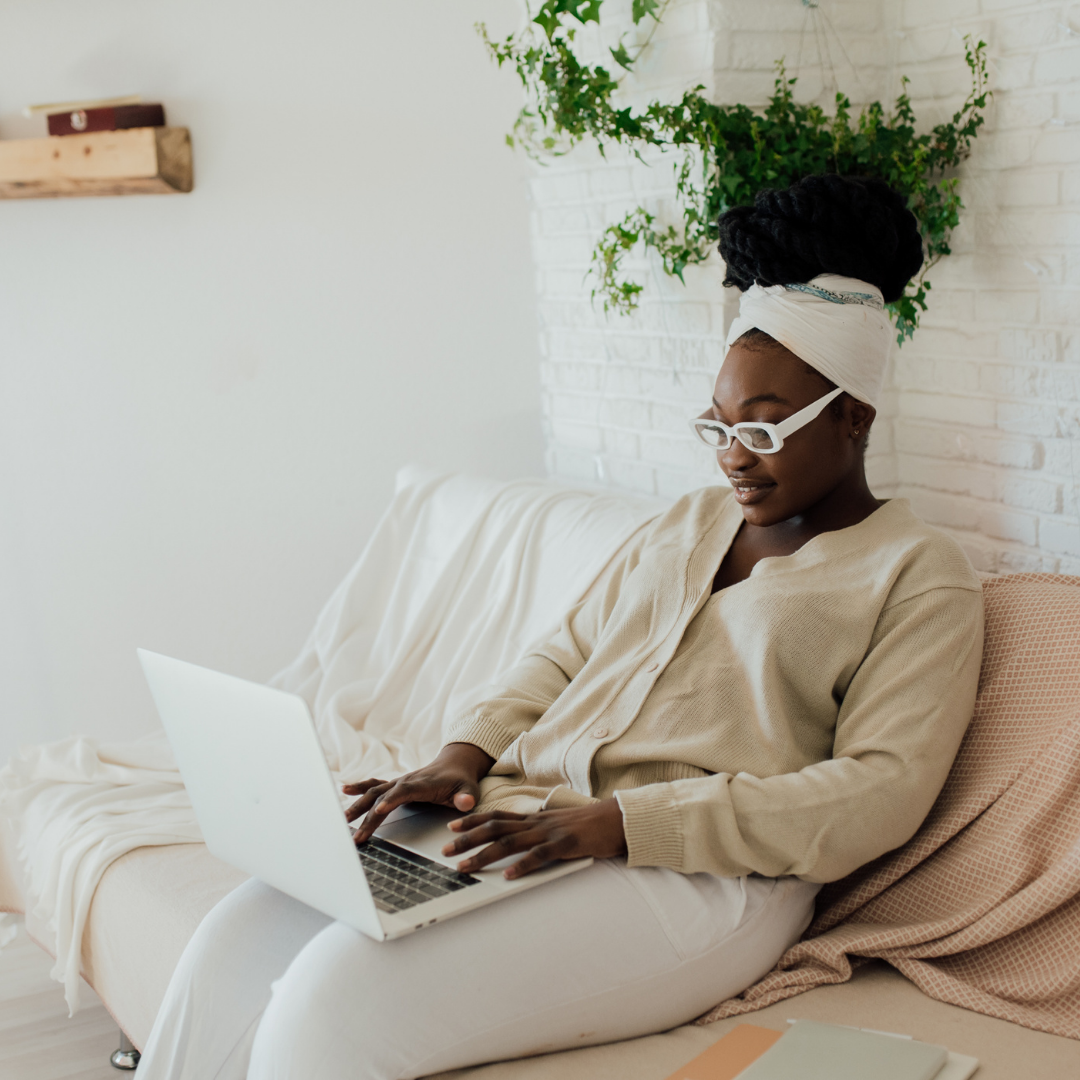How to Use Ease When Designing Knitting Patterns
Whilst size charts are extremely useful when understanding how to fit patterns to a large range of body sizes, knowing how ease works is crucial to good fit. However, it’s easy to get confused about what kind of ease to use, how much and where to put it in the first place.
In this blog post, I will show you how to use ease to ensure comfort and good fit for the wearer, whilst also showing you how it can be used as a design element.
What is Ease?
Ease is the difference between the measurements of the maker’s body and the measurements of the finished garment.
Positive ease means that the finished garment measures larger than the body in a specific area
Negative ease means that the finished garment measures smaller than the body in a specific area
Zero ease means that the finished garment measures exactly the same as the body in a specific area
How to Use Ease in your Knitting Patterns
When it comes to garments, designers often use positive, zero and even negative ease in order to give their design a certain aesthetic.
I love how ease can completely transform a garment. A garment designed with lots of positive ease will look completely different to the same garment worn with much less positive ease. Whilst ease is important for comfort reasons, my favourite way to use ease (specifically, positive ease) is as a design feature to create volume and interesting silhouettes.
Using ease for a comfortable fit allows the wearer to move easily without being restricted by the garment. This might mean adding positive ease to the armholes so that they’re not digging in or using negative ease on socks so that they don’t slide around inside a shoe.
My Tarragon sweater was designed with lots of positive ease to ensure a drapey, relaxed fit.
Bust Ease
The bust is where most of the discussion around ease focuses on. When a knitting pattern notes that it has been designed with a certain amount of positive/negative ease, it typically means around the bust.
Depending on what you are designing, you may not need to add positive ease at the bust for comfort reasons - it might be more of a style choice. However, if you are designing something that is intended to be layered on top of other garments, I suggest adding 5-20 cm (2-8”) of positive ease, depending on how thick the layers underneath might be. A piece of outerwear will need more positive ease than a layering sweater.
Have you ever worn a cardigan that gapes when you button it? It’s one of my pet hates! That’s why I like to use at least 5 cm (2”) of positive ease at the bust of any buttoned cardigan, even if I want it to look form-fitting. That, along with well-placed buttonholes, should solve the gaping issue.
Positive ease at the bust, especially a lot of it, gives the garment a very relaxed, unstructured and in some cases, elegant look. This is the way I love to use ease.
Negative ease is typically used on form-fitting sweaters that have more of a vintage, 1940’s feel. Something to note is that garments with negative ease will get shorter as they stretch over the body. That’s why it’s a good idea to add a little additional length to the sweater - approx 70% of the negative ease in the bust. For example, sweaters with 3 cm (1”) of negative ease at the bust will need approx 2 cm (0.75”) of extra length on the body.
Hip Ease
I typically talk about adding your ease to the bust measurement, but if the sweater is long enough to cover the hips, you will want to consider adding the ease to the hip measurement. This is particularly useful when you are designing a boxy sweater with no shaping at the waist. If the hips are bigger than the bust measurement, this will ensure that the hem is not fitting too tightly.
Sleeve & Armhole Ease
Usually, a little positive ease is added to the upper arm width, as well as the armhole depth for comfort reasons. It doesn’t have to be a lot - 5 cm (2”) is plenty.
I don’t recommend using negative ease on sleeves, even if you use it on the body, because they will end up feeling restrictive when the wearer bends their elbow and the arm expands.
Something I’ve been having a lot of fun with recently is adding a lot of positive ease to sleeves. You could add positive ease to the sleeve width to create wide sleeves or just use extra at the lower arm to create balloon sleeves, as I did in my ARNE sweater. This is a good way to update a classic silhouette.
How Much Ease to Use in a Knitting Pattern
There are rough guidelines, as shared by the Craft Yarn Council, on how much ease to use according to your desired fit. I found them really useful when I was first starting to understand how ease affected fit. Here is what they suggest:
Very close fitting, negative ease: Very tight fit, smaller than your actual bust/chest measurement. Approximately 2" to 4” (5 to 10cm) less than your actual bust/chest measurement.
Close fitting, zero ease: Body skimming, your actual bust/chest measurement.
Classic fit, some positive ease: Comfortable fit slightly larger than actual bust/chest measurement. Approximately 2" to 4” (5 to 10cm) more than your actual bust/chest measurement.
Loose fit, more positive ease: Slightly oversized fit, larger than your actual bust/chest measurement. Approximately 4" to 6” (10 to 15cm) more than your actual bust/chest measurement.
Oversized, generous positive ease: Very loose fit, much larger than your actual bust/chest measurement. Approximately 6+” (15+cm) more than your actual bust/chest measurement.
Proportional Ease
Something I’ve been thinking a lot about recently is that ease should be proportional to the body wearing it.
In the past, I’ve rarely suggested a range of ease for my sweater designs. Most of the time, I choose how many cm/inches of positive ease I want for the sweater and designed each size with the same amount. Now, I am starting to see that this approach doesn’t work.
Larger bodies will need more ease than smaller bodies in order to get a similarly fitting garment. The same amount of ease will look very different on differently sized bodies. That’s why I want you to suggest a range of ease in your patterns (e.g. 10-20 cm / 4-8” of positive ease) so that the maker can choose the ease that meets their requirements.
Consider how much ease your sample size was designed with. If it is designed for someone with a 122 cm (48”) bust and you want them to wear it with 10 cm (4”) of positive ease, that is approx. 8% of positive ease.
To get that same fit, someone with a 71 cm (28”) bust might use 5 cm (2”) of positive ease and someone with a 157 cm (62”) bust might use 13 cm (5”) of positive ease. They would all end up with sweaters with a similar fit because the positive ease is roughly 8% of their bust circumference.
How to Use Ease in Classic Garment Silhouettes
My Trust Me sweater for Making Stories was designed with less positive ease because I used a set-in sleeve.
Set-In Sleeve Sweater
Set-in sleeve sweaters are a more form-fitting silhouette, so they tend to use less positive ease and can even use negative ease. Oversized sweaters don’t really work with this kind of sleeve because the armhole needs to sit close to the shoulder joint.
Drop-Shoulder Sweater
Drop-shoulders work best when they are oversized. Most of the time, you will want more generous positive ease (15-30 cm / 6-12”) at the bust of a drop-shoulder sweater because the bust width strongly influences the shoulder width.
If the bust/shoulder width of a drop-shoulder sweater is too narrow, it won’t end up looking like a drop-shoulder and instead, it will look like you tried to design a set-in sleeve but got the shoulder measurement too wide. You can work around this if you want a closer fitting bust by increasing the width in the lead up to the armhole in order to get more width across the shoulders.
Raglan Sleeve Sweater
Raglan sweaters are the most versatile of all the silhouettes. They can work with any amount of ease - positive, zero and even negative.
How Yarn Choice Affects Ease
Something that is often neglected when it comes to ease is your yarn choice. The same sweater can fit very differently when knitted in a different yarn.
Drape
The drape of your yarn should play a big part in how much ease you use.
If your yarn has lots of drape, it will look fluid and elegant when used in a design with lots of positive ease. The same yarn will look terrible when used in a garment with negative ease. Drapey yarn doesn’t have the elasticity and memory that a close-fitting garment needs.
If your yarn doesn’t have much drape, but instead it is bouncy and stretchy, it is ideal for garments using negative ease. Yarns like this, typically wool, have lots of elasticity to ensure that the garment will retain its shape and not bag out in areas such as the elbows.
However, if you were to use this sort of yarn in an oversized design, it would look quite different. It will stand away from the body and hold its shape. If you want to create something very structured, this could really work in your favour.
Bulk
Heavier yarns will require more ease than finer yarns to get the same sort of fit. Because of their bulk, heavier yarns sit closer to the body than finer yarns. If you were to re-design a fingering weight sweater, to the same dimensions, in an aran weight yarn, you would need to add more ease to achieve the same fit.
Textured or hairy yarns like mohair also add bulk to the inside of a garment, so if you are designing something in this type of yarn, I recommend adding a little more ease than you usually would to accommodate this.
What are your ease issues?
What aspect of ease most confuses you? Do you struggle with the same thing, time and time again? Share your ease issues with our community, The Sisterhood, in the comments section below. Let’s help each other to figure out ease!












